California Butterfly Ray, Gymnura marmorata
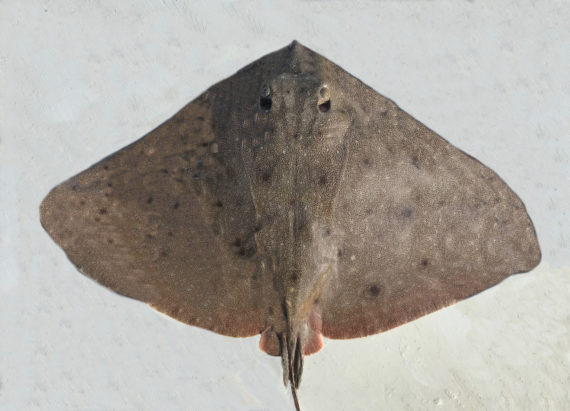 California Butterfly Ray, Gymnura marmorata. Fish caught from coastal waters within Magdalena Bay, Baja California Sur, February 2018. Disc width: 42 cm (17 inches); Disc length: 26 cm (10.2 inches). Catch, photograph and identification courtesy of Brad Murakami, Surrey, British Columbia, Canada.
California Butterfly Ray, Gymnura marmorata. Fish caught from coastal waters within Magdalena Bay, Baja California Sur, February 2018. Disc width: 42 cm (17 inches); Disc length: 26 cm (10.2 inches). Catch, photograph and identification courtesy of Brad Murakami, Surrey, British Columbia, Canada.
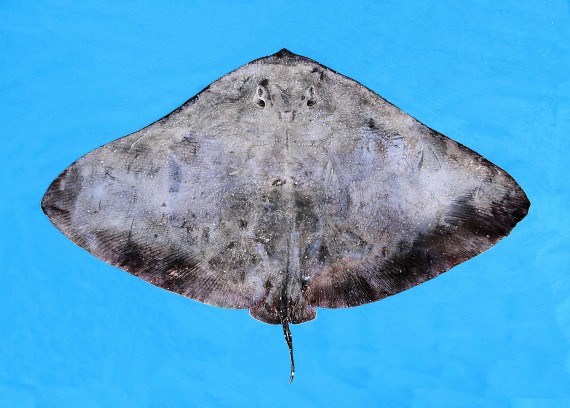
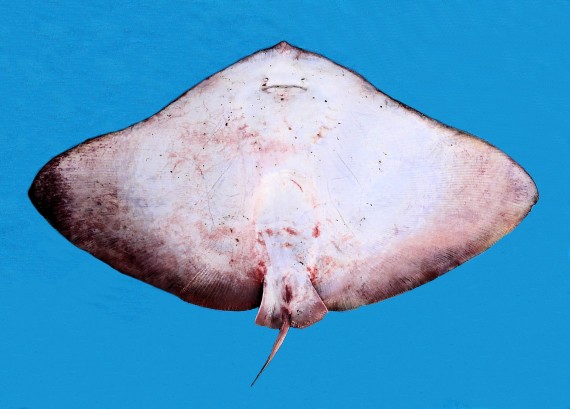
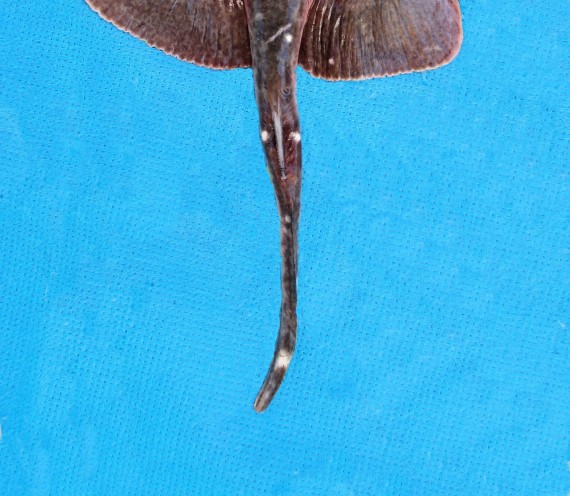
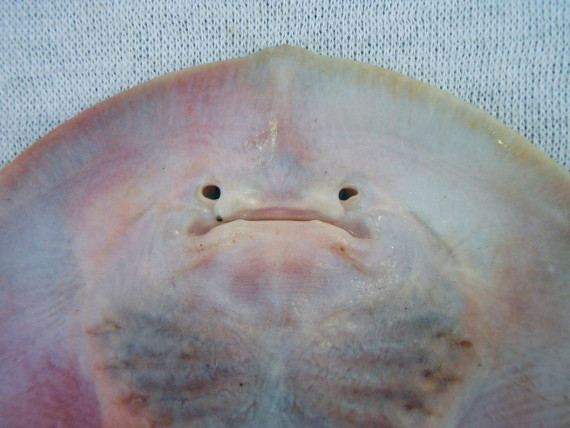
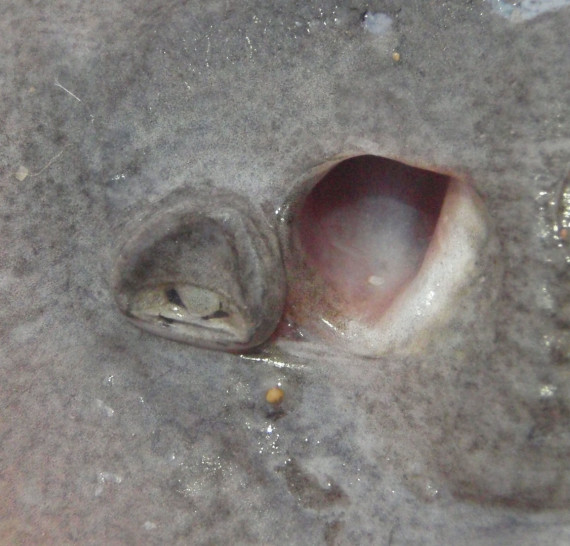 California Butterfly Ray, Gymnura marmorata. Fish provided by the commercial fishermen of the greater Los Cabos area, Baja California Sur, March 2008. Disc width: 51 cm (20 inches); Disc length: 30 cm (12 inches); Tail length: 10 cm (3.9 inches).
California Butterfly Ray, Gymnura marmorata. Fish provided by the commercial fishermen of the greater Los Cabos area, Baja California Sur, March 2008. Disc width: 51 cm (20 inches); Disc length: 30 cm (12 inches); Tail length: 10 cm (3.9 inches).
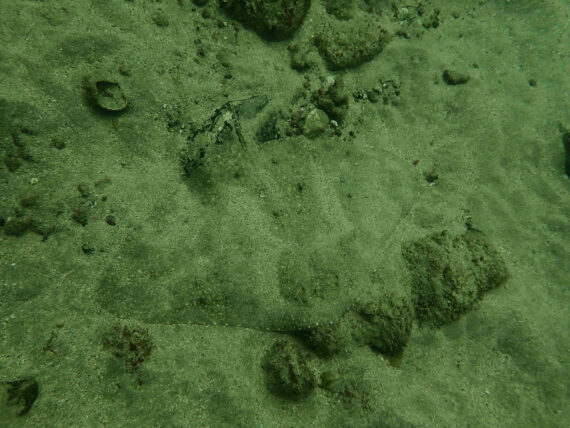 California Butterfly Ray, Gymnura marmorata. Underwater photograph taken in Zihuantanejo Bay, Guerrero, May 2022. Photograph courtesy of Maude Jette, Dive Zihuantanejo, www.Divezihuatanejo.com.
California Butterfly Ray, Gymnura marmorata. Underwater photograph taken in Zihuantanejo Bay, Guerrero, May 2022. Photograph courtesy of Maude Jette, Dive Zihuantanejo, www.Divezihuatanejo.com.
The California Butterfly Ray, Gymnura marmorata, is a member of the Butterfly Ray or Gymnuridae Family, and is known in Mexico as raya mariposa californiana. Globally, there are sixteen species in the genus Gymnura, of which three are found in Mexican waters, one in the Atlantic and two in the Pacific Ocean.
The California Butterfly Ray has an extremely broad rhomboidal disc-shaped body that is approximately 1.5 times wider than they are long. Their pectoral fins are not separated from the head giving rise to their triangularly-shaped body. They are light brown in color and covered with dense pale brown spots overlaid by scattered blackish spots. They become a uniform darker brown upon death. Their head has a bluntly pointed snout, eyes and spiracles on top, and an arched mouth equipped with numerous small teeth in bands. The front margin of the disc is slightly concave and the rear margin is rounded. A key to identification is the distance between the eyes which is greater than the distance from the eyes to the tip of the snout. Their tail is very short and approximately one-half the length of the disc with one or two large serrated venomous spines used for defense. They have no caudal or dorsal fins. Their skin is smooth and without denticles.
The California Butterfly Ray is a demersal species that is found in shallow coastal waters in bays and along beaches and within silty and muddy channels and estuaries at depths up to 95 m (310 feet). They reach a maximum of 1.5 m (4 feet 11 inches) in width and 90 cm (35 inches) in length. They are dimorphic with females being approximately twice the size of males. As of January 1, 2024, the International Game Fish Association world record stood at 16.2 kg (35 lbs 11 oz) with the fish caught in from within Estero Bay, Baja California in April 2021. They feed on buried bivalves, crabs, crustaceans and mollusks. Reproduction is via aplacental viviparity with embryos nourished by small yolk sacs and the young born live. They have a high fecundity level, with four to sixteen pups per litter ranging in disc width from 21 cm (8.3 inches) to 26 cm (10.2 inches) and having a fairly rapid growth rate. The California Butterfly Ray The Acapulco Damselfish is poorly studied with very limited information available about their lifestyle and behavioral patterns including specific details on age, growth, longevity, movement patterns, diet, habitat use, and reproduction.
The California Butterfly Ray is found in all Mexican waters of the Pacific Ocean.
The California Butterfly Ray is a straight-forward identification due to its wide narrow disc and short tail. The Longsnout Butterfly Ray, Gymnura crebripunctata (wideer body; tip of snout greater than distance between eyes) found from Mazatlán, Sinaloa, southward along the coast of the mainland to Guatemala is considered by some to be the same species.
From a conservation perspective the California Butterfly Ray is currently considered to be of Least Concern with stable widely distributed populations. They are caught on occasion by recreational fishermen in Southern California. They show up in abundance in April and May during the breeding season and become a focus species. They are also commonly taken as a by-catch of shrimp trawlers, beach seines, and gillnets and are normally discarded with a high mortality rate. They are sold primarily dried in local markets. If you have a “fish taco” in the Baja there is a high probability that you will be eating this fish. Based on the large decline of guitarfish populations attributed to intense fishing pressure within this range it is assumed that the population of California Butterfly Rays are also in decline. One positive is that heavy fishing pressure has also removed the majority of predatory sharks and upper trophic level teleosts from the environment decreasing both fishing pressure (fewer elasmobranch fishermen) and predatory pressure on this species. The catch of this species is mostly unregulated and the limited number of seasonal bands put in place are not enforced.